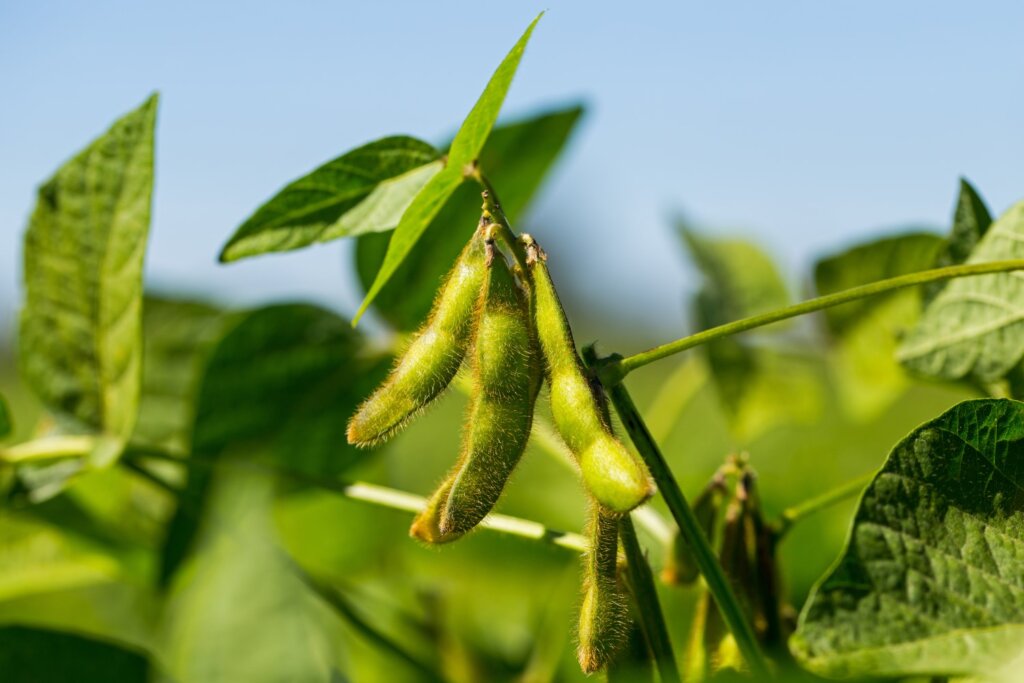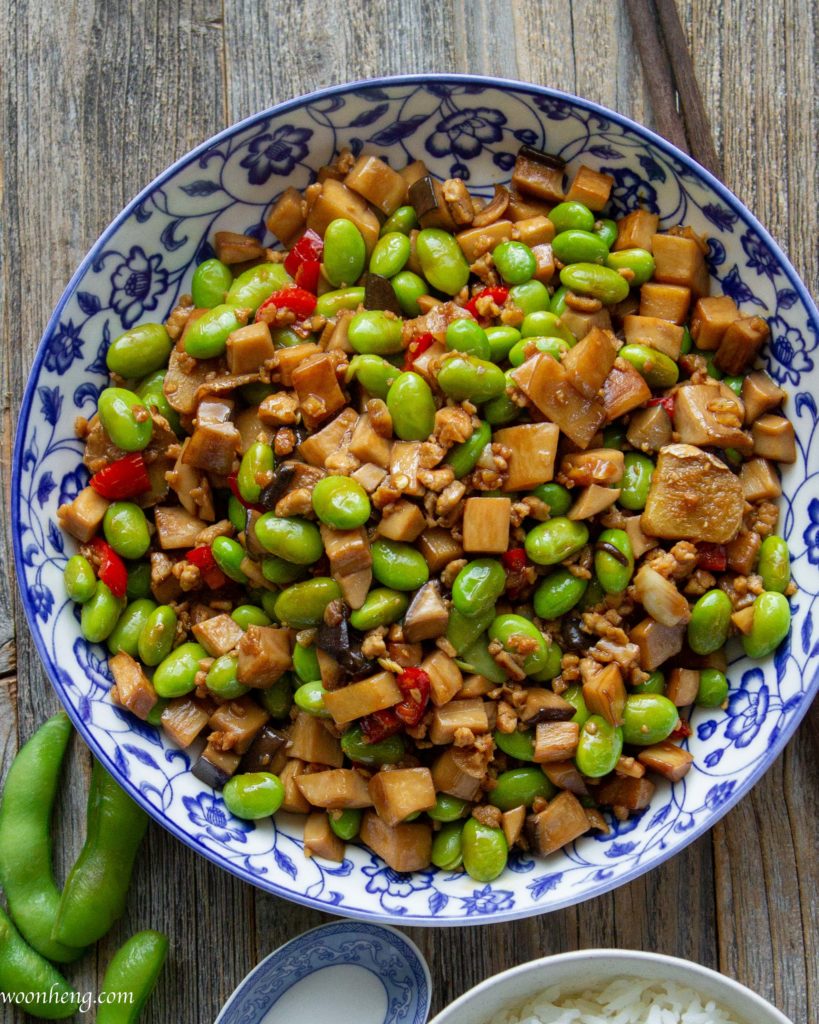Written by Andrew Akhaphong, MS, RD, LD, Mackenthun’s Registered Dietitian
Updated September 26, 2024
Edamame are immature soybeans that are known for its green pods and similarities in appearance like a lima bean. Unlike their mature counterparts which are a light yellow-brown pod, edamame is often eaten as is, mixed in soups or salads, or tossed into stir-fries.
Edamame, a staple in East Asian diets, particularly in countries like China, Taiwan, and Japan, is gaining popularity in the United States. As Japanese restaurants and sushi bars become more popular, this nutritious crop is starting to catch the attention of more diners.
You will be able to find edamame whole in their pods or shelled (without pods) in the frozen department.
Nutritional Benefits of Edamame

It is a complete protein. A complete protein is when a food provides all nine essential amino acids (the most simplest digested form of protein) that our liver cannot make.(1) This is vital for persons who follow a plant-forward diet to maintain metabolic functions.
The nine essential amino acids are –
- Histidine
- Leucine
- Isoleucine
- Lysine
- Methionine
- Phenylalanine
- Threonine
- Tryptophan
- Valine
A 1-cup serving of edamame provides 59% of your daily value of copper. We often associate copper as a metal for items such as coins, jewelry, and pipes, but as a nutrient copper. Like iron in the prevention and treatment of anemia (a condition that causes few red blood cells available), copper also supports this but for megaloblastic anemia. Megaloblastic anemia is when red blood cells are too large in size and have difficulty pushing through blood vessels to deliver oxygen and nutrients.
Edamame contains rich amounts of isoflavones, or plant compounds that act as antioxidants. A small study published in 2021 examined how edamame may support women with menopause.(2) A sample of 38 women reporting two or more hot flashes per day were randomly assigned to a low-fat, vegan diet with ½ cooked edamame, or no diet interventions, for the course of 12-weeks (19 participants in each group). At the end of the study about 79% of the experimental group (15 of 19) reported reductions in hot flash episodes while only 49% of the control group (9 of 15) reported a reduction. The researchers concluded a diet that incorporates ½-cup serving of edamame per day may improve the quality of life for women experiencing menopause.
These same isoflavones have also been found to support the reduction in breast cancer risk. One may find arguments to avoid soy intake as it may increase breast cancer risk due to phytoestrogens, another term for isoflavones. According to Breastcancer.org, soy in fact does not increase risk of breast cancer with studies exhibiting significant lower rates of breast cancer in women living in Asian countries.(3) A study in 2009 examined 73,000 Chinese women over seven years.(4) Participants who ate more soy products showed a 59% reduction in breast cancer risk compared to women who ate less soy products. Participants who also reported eating large amounts of soy products as adolescents had an additional 43% reduction in breast cancer risk.
Edamame and Mushroom Stir-Fry
By WoonHeng, Updated August 31, 2020
What You Need
- 1-cup frozen edamame, thawed
- 10-ounces mushrooms, diced
- 2-ounces firm tofu, mashed
- 4 slices ginger
- 1 jalapeno, seeded and chopped (optional)
- 3 cloves garlic, minced
- 2-tablespoons soy sauce
- 1-teaspoon toasted sesame oil
- 1-teaspoon sugar
- Cornstarch slurry (1-tablespoon of cornstarch mixed with ¼-cup water
- Cooking oil
- Salt and pepper to taste
What You Do
- Remove mushrooms from its package and wipe them clean with a damp paper towel. Then, dice into tiny cubes and set aside.
- Heat a non-stick pan with 2 -teaspoons oil, stir-fry mashed tofu over low-medium until dry and golden brown, then push tofu to the side of the pan.
- Add another drizzle of oil and sauté mushrooms until aromatic and fully cooked through. Look for a nice brown edge and when mushrooms start to release its aroma. Push mushrooms to the side of the pan.
- Add more oil and sauté ginger until fragrant, then add in the chopped chili, garlic and continue to cook for about 30 seconds.
- Bring the mixture together and cook for another 30 seconds.
- Swirl in a drizzle of toasted sesame oil then add the soy sauce, sugar, and stir to combine.
- Add the edamame beans and give it a quick toss. Taste test and season if needed.
- Finally, add in the cornstarch slurry and combine all the ingredients together. Turn off the heat and serve warm.

Reference
- Hoffman JR, Falvo MJ. International Society of Sports Nutrition Symposium, June 18-19, 2005, Las Vegas NV, USA – Macronutrient utilization during exercise: implications for performance and supplementation. J Sports Sci Med. 2004; 3(3): 118-130. PMID: 24482589.
- Barnard ND, Kahleova H, Holtz DN, del Aguila F, Neola M, et al. The women’s study for the alleviation of vasomotor symptoms (WAVS): a randomized, controlled trial of a plant-based diet and whole soybeans for postmenopausal women. Menopause. 2021; 28(10): 1150-1156. doi:10.1097/GME.0000000000001812
- DePolo, J. Soy and breast cancer: soy foods don’t increase risk of breast cancer or breast cancer recurrence. Breastcancer.org. Updated July 18, 2024. Accessed September 27, 2024. Retrieved from https://www.breastcancer.org/managing-life/diet-nutrition/breast-cancer-risk-reduction/foods/soy
- Lee S, Shu X, Li H, Yang G, Cai H, et al. Adolescent and adult soy food intake and breast cancer risk: results from the Shanghai women’s health study. Am J Clin Nutr. 2009; 89(6): 1920-1926. doi: 10.3945/ajcn.2008.27361


